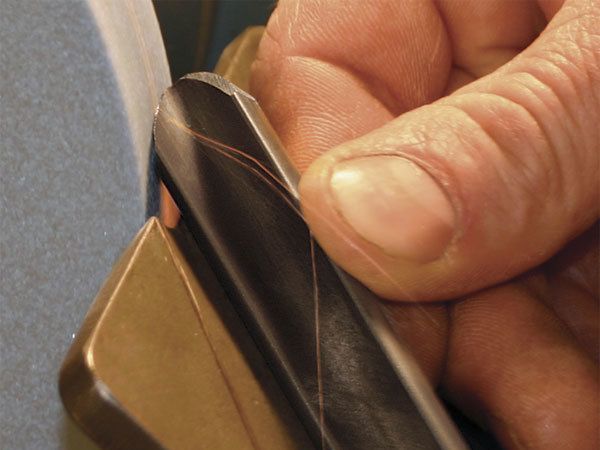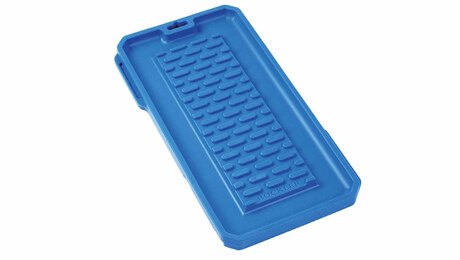Grinding a Thumbnail Gouge
The 40 degree solution to sharpening gouges
Synopsis: Wood turner Mike Mahoney details the correct way to grind a bowl or spindle gouge, keeping its distinctive fingernail profile and a cutting edge beveled at a consistent angle along the curved end of the tool. Proper bevel is crucial — in this case, 40 degrees. Mahoney’s freehand method makes use a template on the grinder that enables you to get that important, consistent 40-degree bevel on your gouge.
In my years of teaching wood turning, I’ve noticed that many students have trouble learning how to grind gouges correctly. That’s understandable. Unlike most other turning tools, a bowl or spindle gouge must be moved in two directions simultaneously—rolled against the grinding wheel while being swept from side to side. That’s the only good way to keep the gouge’s distinctive fingernail profile and a cutting edge beveled at a consistent angle along the curved end of the tool.
The proper bevel is crucial for cutting wood efficiently. As a rule, the more acute the bevel, the cleaner the gouge will cut and the less force you’ll have to use. For most turnings, a 50° bevel is better than one of 70°, and 40° is better still.
The sharpening jigs I’ve seen produce an uneven bevel, invariably 16° to 20° more acute on the sides than at the tip. That’s because they aren’t designed to swing the gouge from side to side. As a result, the gouge will vibrate when used and will dull quickly.
I believe it’s better to grind gouges freehand. The technique described here, which I adopted after watching my friend and master turner Stuart Batty, is simple, effective, and easy to learn.
Set your grinder for the proper angles
Handbooks and experts give different recommendations for optimum bevel angles, but Batty and I have found through experience that spindle and bowl gouges work best with a bevel of about 40°. As it happens, that magic number represents the bevel angle, the amount of side-to-side movement you make when grinding, and the amount of bevel on the top side. Here’s how to set up your grinder to get a consistent 40° bevel.
First, mark guidelines on the grinder platform 40° left and right of the center of the grinding surface. They will help you get a consistent side-to-side sweep. Make a template from scrapwood cut to the same size as the platform. Mark the guidelines with an indelible marker.
Next, adjust the angle of the platform. Set it by eye to an angle that looks close to 40°, then test it by grinding the bevel on the nose of the gouge. Check the result with an angle gauge or protractor, and tweak the platform angle as needed. Don’t worry if the angle isn’t exact; a couple of degrees either side of 40 won’t matter. Once you have the platform at the correct angle, grind the bevel on the nose again and recheck it.
Grind a fresh cutting surface
The next stage of grinding deliberately flattens the cutting edge so you will have a fresh surface to grind back to. Hold the tool in line with the grinding wheel with the flute face down on the platform.
From Fine Woodworking #187
For the full article, download the PDF below:
Fine Woodworking Recommended Products

Rockler Silicone Sharpening Stone Tray

Honing Compound





















Log in or create an account to post a comment.
Sign up Log in